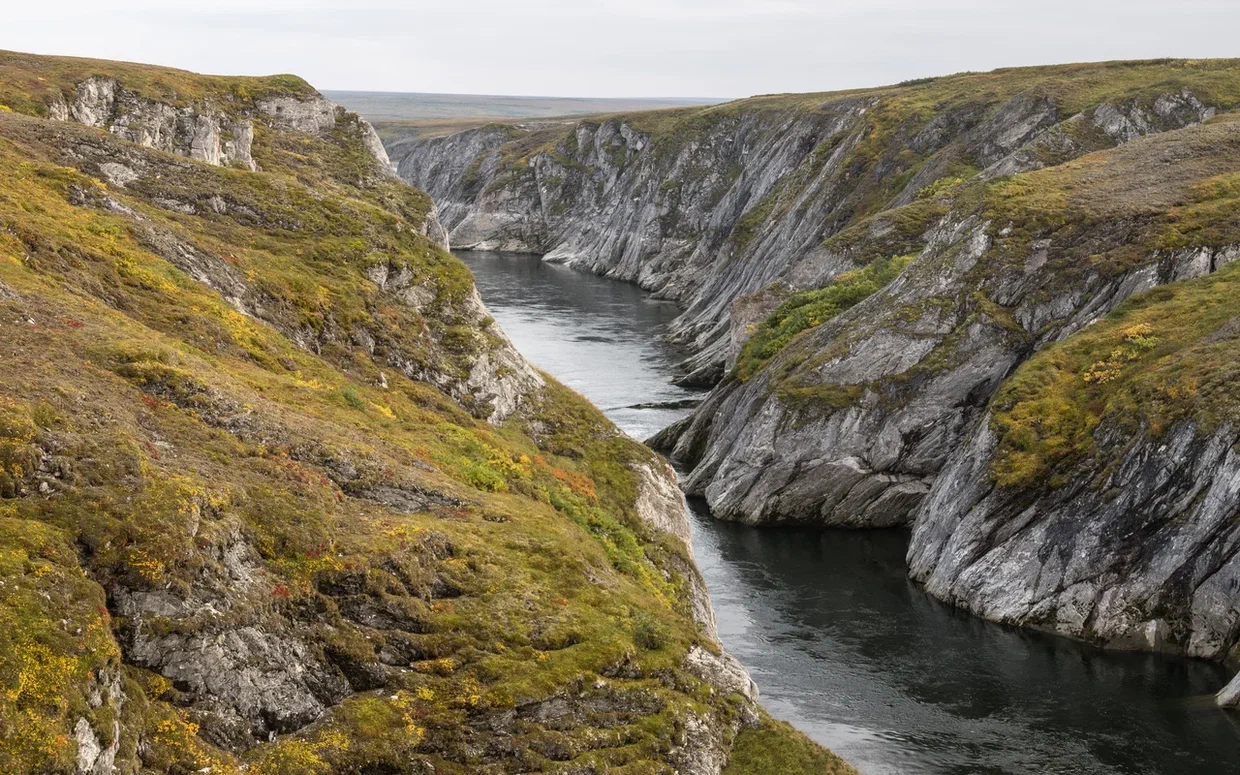
The endless tundra, picturesque northern mountains, canyons with a height of a nine-storey building, pure mountain rivers and lakes.
Polar Ural
The main facts
The Polar Urals is a region in the far north of Eurasia. Its area is about 25,000 square kilometers. Konstantinov Stone is considered its northern border, and the Khulga River separates it from the Subpolar Urals. The topography of the region is primarily mountainous, with elevations of 800 to 1,200 meters; individual peaks, such as Payer, are about 1,500 meters high. Along with the deep dismemberment of the ridges and ranges a characteristic feature of the relief of the northern part of the Polar Urals is the insignificant height of the passes through the main watershed.
It is located on the border of Europe and Asia, on the territory of the Komi Republic and the Yamalo-Nenets Autonomous Okrug. The notional boundary of the parts of the world coincides with the border of the regions and runs mainly along the main watershed of the ridge separating the Pechora (in the west) and Ob (in the east) basins. Part of the runoff of the northern slopes falls directly on the Baidaratskaya Bay of the Arctic Ocean. The prevailing heights of the ranges are 800-1200 meters with individual peaks up to 1500 meters (Mount Payer). A characteristic feature of the relief of the northern part of the Polar Urals, along with the deep dissection of ridges and massifs through transverse valleys, is the insignificant height of the passes through the main watershed (200–250 meters). One of these valleys (the Sob River) passes the operating Transpolar Main Line of the Northern Railway.
Climate
The region belongs to the areas with sharply continental climate. It is famous for its cold and snowy winters and strong winds. Since wet cyclones usually come to the region from the west, the western slopes of the mountains usually receive times more precipitation than the eastern ones.
Sometimes, it is also observed in the Polar Urals that the air temperature on the plain is lower than that in the mountains.
As for summer in the Polar Ural, it is short and unpredictable. Snow in the mountains mostly melts by the end of June. Several days of hot weather can suddenly be followed by a cold period with strong winds, heavy rains, and hails.
Fauna, flora and population
The Polar Ural’s vegetation is sparse. Full-fledged forests are found only in the southern part of the region. In the north, only birch and larch groves can be seen. In the river valleys on the eastern slope of the ridge, blueberries, cowberries, cloudberries, and mushrooms grow.
The most prominent representative of the living nature of the Polar Ural is the reindeer. The absolute majority of individuals in its local population belong to its domestic subspecies. Along with reindeers, there are hares, foxes, bears, and other animals in the region.
The Polar Ural has no permanent human population. In summer, camps of reindeer herders, rangers, and scientists can be seen in the tundra.